Art Happens in Storied Congress Space
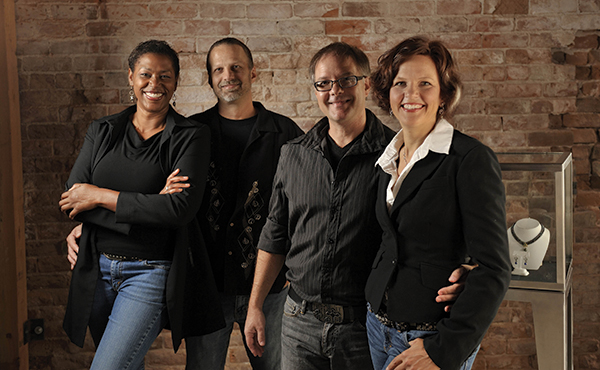
The Krikawa Family, left to right: LeCarie Whitfield, Chief of Operations (Patrick’s Wife); Patrick Swartz, Master CAD Modeler (Lisa’s brother and John’s best friend from High School); John Krikawa, Chief Technical Officer; Lisa Krikawa, Founder, CEO, Head Designer. Photo © Balfourwalker.com
Art Happens in Storied Congress Space
Krikawa Jewelry Designs is upping the ante downtown, adding its new design studio, gallery and retail space to an already critical mass of cool on Congress
The eastern end of Congress exerts a gravitational pull downtown – with a steady diet of food and drink phenomena. But it’s time to start walking west, where a faceted flash has been added to the mix…and a long-standing Tucson designer has raised the game along the far reaches of downtown’s entertainment corridor.
Lisa Krikawa – award-winning jewelry designer and the last graduate of the University of Arizona’s metal-smithing program in 1997 ––is moving her studio downtown, the first jewelry house devoted to a mix of contemporary wearable art gallery, jewelry bench, local artisan resource and offices. It’s an ambitious new project launched by her 17-year old Tucson family-operated company, following a year of research and planning. Leasing the 4,200 square-foot space once occupied by one of Tucson’s first jewelers (Daniel’s Jewelers), Krikawa has carefully renovated the historic jewelry store, exposing its brick and tiles, and preserving touches like the Daniel’s mosaic street tablet, under the sparkling direction of Baker-Hesseldenz Design and architect J. Chauncey Meyer, known for their innovative urban modern spaces.
Since opening shop in her garage, Lisa has forged a singular niche in an international arts landscape, where her couture-design custom rings, her extremely detailed layering of the old-world mokumé-gané technique on heirloom pieces, and her high-tech, intricate swirls of gems set in precious metal are renowned. As much at home carving her own jeweler waxes as crafting 3-D CAD-modeled designs, Lisa has built a business showcasing environmentally-clean and ethically-certified pieces, with a mystique unlike anything else you’ll see in Tucson. Krikawa has thrived under Lisa and her family’s symbiotic partnership, growing into an organization of 11 employees and over 5,000 custom designs for clients from Australia to Canada, and from Germany to New York, California and Tucson.
After multiple moves across the city, from garage, to a Sam Hughes studio and most recently to St. Philip’s Plaza, Krikawa says the 21 E. Congress St. relocation, opening November 22, signals that her studio is growing up, a perfect marriage of high art, community vision and unerring instinct for what’s cool.
“We’re artisans who belong downtown,” confirms Krikawa, who notes that everyone working at the company has his/her own art. “All our choices convey our vision of creative expression, and sustain our desire to be part of a dynamic community integral to our customers’ experience.
“When I saw the space I saw it as a possibility for anything,” she continues. “I knew it was right for Krikawa.”
With its tall ceilings and brick walls left raw, the innovative structure is being built out in a multi-faceted layout resembling a small design city. In a bright front exhibition area, visitors will observe handcrafted modern displays showcasing works of top-tier artisans; further into the 1,600 square feet of gallery showroom space will be a congenial lounge area as well “play stations” for customers to visualize and personalize the process of creating custom jewelry pieces. Further back, Krikawa gets even more interesting with window views in to the creative nurseries – the soldering, CAD and tooling stations, as well as the jeweler’s bench. Krikawa offices are in the back.
Lisa Krikawa has a vigorous agenda for her front exhibition space, and has invited approximately 30 premier artisans to be part of the first show, an installation called Local Flavors, on view through January 31. The collection features contemporary jewelry pieces, hats and other wearable art, making for a gallery experience that’s both intimate and communal, spiced up by unusual offerings that mix metals and patterns. Intuitive and diverse, the Local Flavors show is influenced by local design and what feels right. “It’s experimental, it’s fun,” Lisa observes. “It’s thoughtfully curated, but it also has a freshness relatable to everyone.”
Architecturally-styled Erik Stewart jewelry, as well as urban designs by Maureen Brusa-Zappelini and unique silverwork by Sam Patania, are among the works and artists represented. Like a fine digital mix made by a friend, the collection works because of the detail and the quality.
For the opening, Krikawa also is introducing a new line of sterling food-related charms, a whimsical nod to the foodie and fashionista locavorism of her Congress counterparts. A portion of charm sales will support the Food Bank, a philanthropic practice Krikawa routinely provides to local nonprofits.
A hint of Krikawa’s unique downtown programming is evident in its planned extracurricular activities, including DIY workshops, which will allow customers to be involved in the CAD design and even the polishing of their custom pieces. “Art is personal expression and we want those who wish it, to have a hand in their own jewelry,” she asserts.
This type of DIY involvement, although somewhat revolutionary in the jewelry business, is of growing interest, and Krikawa excitedly talks about the creative empowerment planned in her studio.
“I’m a Tucsonan who always has believed in the spirit of downtown,” the metalsmith says. “With this space, I can continue my business as a successful commercial venture, but also open up to new creative options for myself as an artist and for the community as a whole.”
Krikawa’s dynamic sense of possibility is jumping at the chance to explore the less orthodox. “I don’t want to put any limits on what Krikawa might do downtown,” she smiles.
Krikawa Jewelry Design’s new space opens Saturday, November 22, 6-9pm., with its Local Flavors exhibit, 21 E. Congress St., downtown. Showroom and design appointment hours: Tuesday-Friday, 9am-5pm; Saturday, 10am-4pm. (520)322-6090, Krikawa.com.

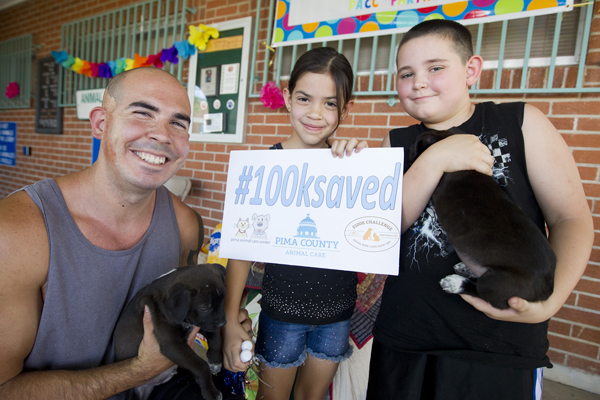
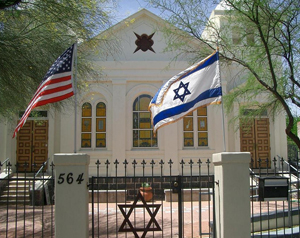
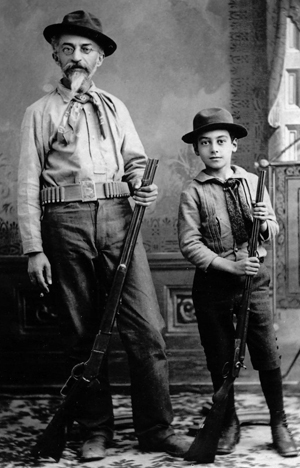
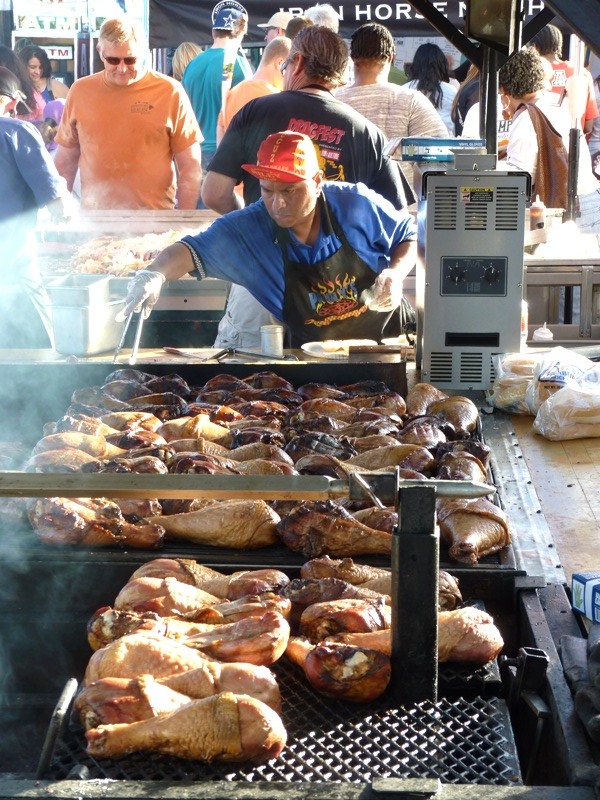


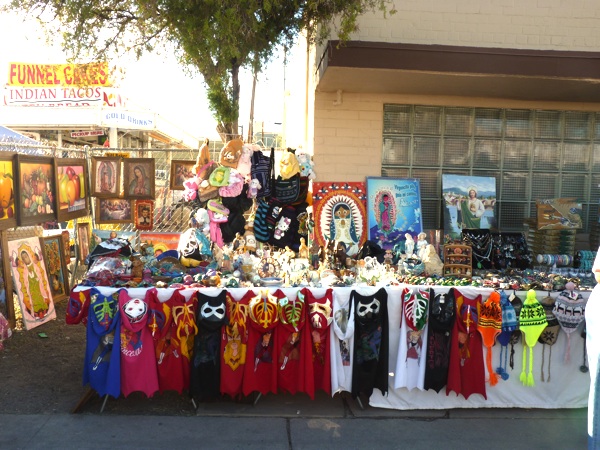


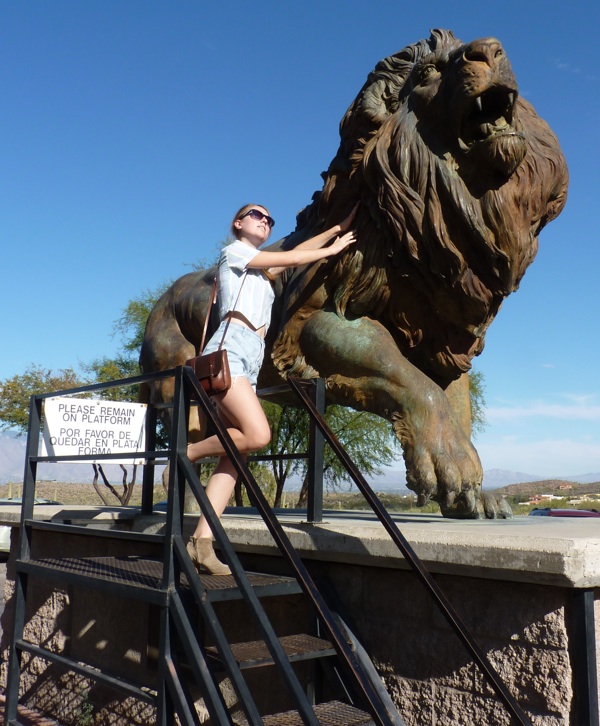


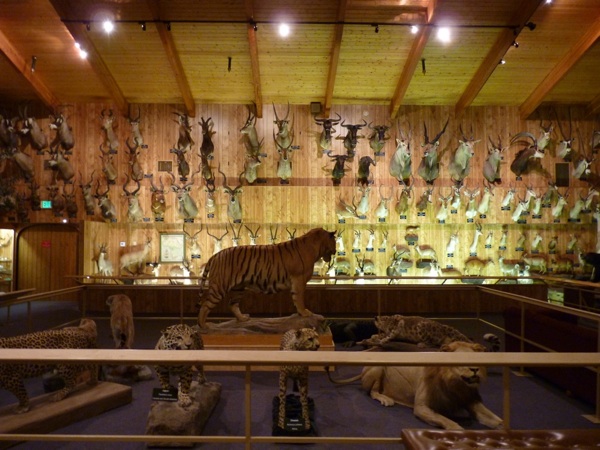

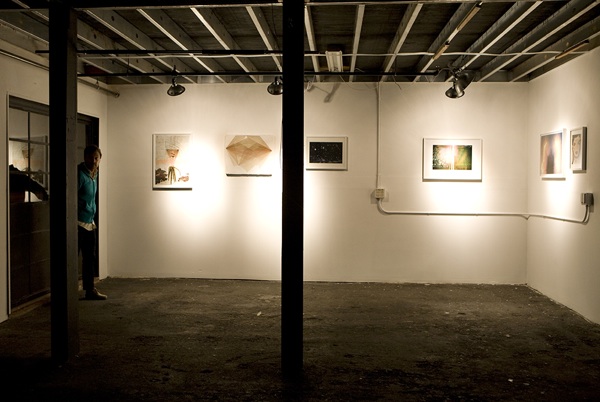




Also find us on...